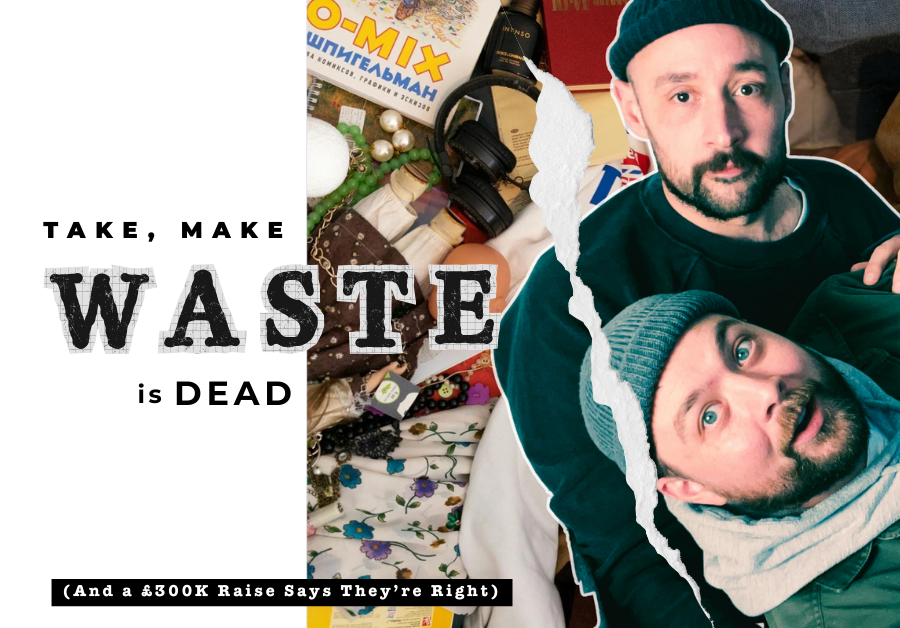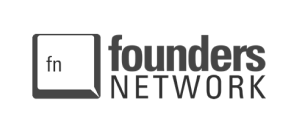The SaaS (software-as-a-service) market has been wild over the last few years. Valuation multiples for most public SaaS companies have gone from a meagre 5x in 2016 to an astonishing 18x at the end of 2021.
It’s easy to see why.
SaaS tools are an indispensable part of modern businesses. Because of this, cloud-based SaaS solutions have become highly sought-after acquisitions for investors.
Despite lower growth projections for 2023, every high-growth SaaS company is trying to carve out its position in this massive market.
At some point, you, as a founder, will ask yourself, “How much is my SaaS company worth”?
Business valuations are never straightforward. And with SaaS valuations being so crazy these days it’s hard to determine a fair price.
Whether you are looking for funding or planning an exit, this article will demystify how SaaS companies are valued and how you can maximise your valuation.
In this guide, we’ll cover the following:
✅ Why you need a valuation for your startup.
✅ The impact of funding stage and growth on SaaS valuation.
✅ Earnings valuation methods.
✅ How to find your revenue multiple.
✅ The most important factors to consider when valuing a SaaS company.
✅ Other factors that affect a business valuation.
✅ How to add value to SaaS companies.
✅ Common mistakes to avoid when valuing your startup.
❓Why Do I Need to Value My Business?
Generally speaking, a business valuation is needed in three cases:
➡️ When a company requires funding.
➡️ When a founder is planning to exit (sell) their business.
➡️ To determine equity splits among founders or employees.
❓When Should I Value My Business?
Technically you can value your business at any stage of growth.
However, the growth stage of your startup impacts its value as investors often take a SaaS company’s growth stage into account when valuing the business.
Generally, startups have three stages:
➡️ Pre-revenue and early-stage companies (seed through Series A)
➡️ Growth stage companies (Series B)
➡️ Pre-IPO (Series C-beyond)
Valuing early-stage startups, especially ones that are pre-revenue, is more art than science and involves using a lot of estimates and rules of thumb, due to the lack of available concrete data.
They are usually done when founders need investment to grow their business and ultimately depend on what founders and investors agree on during negotiations. This takes into account the amount of funding needed and the amount of equity to be given in exchange.
For a more in-depth look at how to value pre-revenue startups, have a look at our early-stage startup valuation guide.
A startup’s valuation becomes more formal as it grows and generates a profit, usually in the growth and pre-IPO stages.
As mentioned above, you can value your business at any point, depending on your needs. But, you will get a higher and more accurate valuation once you’ve generated revenue.
Next, we’ll discuss a common way to value a revenue-generating SaaS business.
Market Multiple Valuation Method
A common way of valuing revenue-generating SaaS businesses is using a market multiple method.
Calculating your earnings is the first step when using this method.
There are two main ways to do this:
➡️ EBITDA: Earnings before interest, taxes, depreciation, and amortisation.
➡️ SDE: Seller discretionary earnings.
EBITDA (Earnings Before Interest, Taxes, Depreciation, and Amortisation)
For SaaS businesses that generate steady earnings and revenues, the most common valuation measure used is EBITDA combined with a market multiplier (we will get to this later!).
Traditionally, this type of SaaS valuation model is used for organisations with over $5 million in annual revenue.
EBITDA stands for earnings before interest, taxes, depreciation, and amortisation. The idea behind EBITDA is to calculate the cash profit.
All of the information necessary to calculate EBITDA can be found in a company’s financial statements, and the formula typically used for the calculation is:
💻 EBITDA = Net Income + Taxes + Interest Expense + Depreciation & Amortisation
Depreciation is an accounting method that is used to spread the cost of a physical asset throughout its useful life. So instead of a company booking the total cost of an asset it purchased in year one, it can spread it out over a period of time using depreciation.
Amortisation is essentially the same thing but it’s used to spread the cost of intangible assets, e.g. patents, trademarks, and copyright over a specific time, typically over their useful life.
EBITDA Example
Let’s do an example using a fictional company called Mobi-Rite. Mobi-Rite is a small SaaS startup that provides a platform for developers to create mobile games.
In its third year, Mobi-Rite generates £64 million in revenue, with the cost of the product as well as overheads together amounting to £30 million.
Depreciation and amortisation expenses are totalled at £14 million. With £5 million in tax-deductible interest expenses, the earnings before taxes are £15 million. Assuming a 20% tax rate, the company will pay £2 million, leaving a net income of £13 million.
To get the EBITDA, the depreciation, amortisation, interest, and taxes need to be added back onto the net income. This results in an EBITDA of £34 million, which you can see reflected in the table below:

SDE (Seller’s Discretionary Earnings)
CFI defines Seller’s Discretionary Earnings (SDE) as “a cash-flow based measure of business earnings in an owner-operated business. It comprises the profit before tax, and interest of a business before the owner’s benefits, non-cash expenses, extraordinary one-time investments, and other non-related business incomes and expenses”.
Simply put, Seller Discretionary Earnings is the money left after the owner has paid all expenses. Small businesses with under $5 million in annual revenue are almost always priced using an SDE model.
SDE is calculated as follows:
💻 SDE = Revenue – Cost of Goods Sold – Operating Expenses + Owner Compensation
Revenue is the sales the business operations generate.
Cost of Goods Sold refers to the direct cost the company incurred for producing the goods sold.
Operating Expenses are the main operating expenditures of the business, such as rent, utilities, and salaries.
Owner Compensation is the wages paid to the owner for their work.
Calculating the EBITDA or SDE value is the first step in valuing your SaaS business. The next step is to find your multiple, which we discuss below.
What Is a SaaS Valuation Multiple?
A revenue multiple is a way to determine the maximum value of a company by comparing it to similar companies in the market. It is a relative valuation method:
💻 Revenue multiple = Selling price of company / Annual Revenue
Let’s unpack this calculation with a simple example. Here are five public SaaS companies from a particular sector and their revenue multiples derived from the above formula:

The next step is to calculate the average revenue multiple from these five companies, which is 3.67x. This multiple is a rough benchmark to evaluate the potential value of a startup in this particular industry.
For example: If your startup forms part of the same sector as the above companies and has an EBITDA of £1,000,000, the estimated valuation of your company using a revenue multiple valuation by industry will be:
💻 Valuation = £1,000,000 * 3.67 = £3,670,000
Revenue Multiples are Anything But Standard
So, to get a valuation for private SaaS companies, take the EBITDA or SDE value, then multiply it by an industry-specific multiple.
Simple, right? Not really! The hard part of this calculation is knowing what the SaaS industry-specific multiple is. SaaS valuations are all over the place.
Generally, the more established the business, the higher the multiple will be. In 2023, the multiple for U.S. SaaS companies is 6.7x, down from 18 – 19x in 2021.
The multiple you get is based on a spectrum – it can be anywhere between 3x to 15x of annual revenue (shown below).

Knowing what goes into the multiple is key to understanding how your SaaS company will be valued and sold. Below we discuss the key metrics taken into consideration in a SaaS valuation.
The Most Important Factors to Consider When Valuing a SaaS Company
🏆 Churn
Churn refers to the rate you lose customers in your business. Churn is an important metric for SaaS companies.
A business’s ‘churn rate’ is calculated annually by comparing the percentage of customers who cancelled their subscriptions versus those that remain.
Investors care about churn rate because it’s a way to forecast monthly recurring revenue.
How Much Churn?
Within the SaaS ecosystem, ‘acceptable’ churn rates vary depending on your customers and industry.
A healthy level of customer churn for a business is around 5-7%, or about 5 customers out of every 100 leaving.
SaaS businesses targeting SMEs (small and medium-sized enterprises) may have higher churn rates due to the high failure rate of small businesses. However, SaaS businesses targeting enterprise customers should aim for a churn rate of 10% or lower, as seen in the figure below:

Renewal Rate
SaaS companies make money on a subscription-based business model. As such, companies can use renewal rates to measure churn.
Regarding customer retention, SaaS companies should aim for renewal rates of over 90%.
🏆 Customer Acquisition Cost (CAC)
Getting new customers requires a business to spend money on marketing. The amount of money spent on getting new sign-ups is called the customer acquisition cost (CAC). Keeping this cost low is essential, especially if your SaaS company has a high churn rate.
To decide if the CAC is good, look at how much each customer is worth to the business; this metric is known as LTV or customer lifetime value.
🏆 Customer Lifetime Value (CLV)
The total amount a customer spends with your business throughout their lifetime as your customer is known as customer lifetime value (LTV).
LTV is combined with CAC to evaluate the overall performance of a business. Ideally, the company should gain more revenue from a customer than it costs to acquire that customer.
Investors and potential buyers want to see a good LTV:CAC ratio. This ratio helps them understand and predict if the business will be successful in the long run. It shows them that the company has a steady income and that the product is useful for customers.
A commonly accepted ratio for SaaS companies is around 3:1.
🏆 Monthly Recurring Revenue (MRR) Vs. Annual Recurring Revenue (ARR)
MRR (Monthly Recurring Revenue) and ARR (Annual Recurring Revenue ) are two SaaS metrics that matter in a SaaS company valuation.
Potential investors tend to focus on MRR (Monthly Recurring Revenue) because it’s a more reliable measure of revenue.
So, when planning an exit, don’t be tempted to discount annual plans to boost your ARR (Annual Recurring Revenue ) numbers, as this will decrease your MRR.
SaaS Metrics that Impact Valuation
💵 Founder Involvement
When building a SaaS company, a founder can often be involved in all aspects of the business. However, when the time comes to sell, this level of involvement can hinder interested buyers.
When preparing for an exit, it’s essential to establish systems and procedures that minimise a founder’s day-to-day involvement.
If you’re the founder, ensure that your employees and management team thoroughly understand how to operate the business without your input.
💵 Age of the Company
The big benefit of having an established company history is that it lets investors see trends in the business. A reliable track record makes it easier for investors to predict how your SaaS business will perform in the future.
Generally speaking, when it comes to SaaS valuations, companies that are two years old are considered the entry point for investors.
As we’ve mentioned above, a business can be valued at any stage. The time factor is significant because more time in business means more data for potential investors to get a more accurate valuation of your business. In essence, more data represents less risk for investors.
💵 Growth Rate
SaaS businesses are valued based on present and future growth. Investors are drawn to companies with a steady and predictable growth rate. A consistent growth rate is more desirable than fluctuating and unpredictable growth patterns.
What is the ideal growth rate for your SaaS business?
SaaS company growth rate relies heavily on a company’s development stage. The average revenue of SaaS businesses falls between 15% to 45% growth YOY.
Ideally, buyers would like to see growth between 10-20% YOY.
💵 Market Trends
As well as individual company growth, the overall market impacts valuations.
The state of the overall market impacts valuations, too. If the whole market or a particular sector performs exceptionally well or poorly, it helps put into perspective the performance of an individual business.
So keep an eye on these trends and price your company accordingly – if public companies are valued in the tens of millions, don’t value yours at £3m!
Other Factors That Can Impact Your SaaS Business Valuation
Churn, CAC & LTV, and MRR vs. ARR are vital metrics for SaaS company valuation. However, many other factors play a part in working out a fair price for a company, including the following:
💵 Customer Acquisition Channels
Put simply, acquisition channels refer to the platforms you are using to sign up new customers and win back old ones. Your SaaS business model would cease to exist without these established customer acquisition channels.
A few examples of acquisition channels for SaaS are:
➡️ Search engine optimisation (SEO).
➡️ Social media paid advertising (Facebook, LinkedIn, Instagram etc.).
➡️ Account-based marketing.
➡️ Organic content marketing.
➡️ Partnerships.
➡️ Affiliate programs.
➡️ Referral programs.
Robust customer acquisition channels are essential to investors, who tend to evaluate these in terms of concentration, competition, and conversion, which we will discuss below.
💵 Concentration
A successful SaaS business will acquire customers through various channels, such as organic search, affiliate marketing, and paid advertising.
Having a diverse range of channels not only reduces dependency on a single source but also demonstrates the money-making potential of the business.
Most SaaS businesses acquire customers through organic content marketing before exploring other channels.
💵 Channel Competition
A savvy investor assesses how well your acquisition channels perform against the competition.
As a founder, you will need to understand the landscape. Do your competitors have strong backlink profiles? Do they rank highly for relevant keywords? If this is the case, it will be hard for your SaaS company to pull off organic SEO.
Similarly, it’s important to look at your competitors’ paid strategies. Would you be able to outspend a competitor for key search terms?
Remember that all acquisition channels have competition. It’s important to show prospective buyers how your traffic channels work and will hold up against new competitors.
💵 Conversion
Do you want to wow investors during a SaaS company valuation? Show them the conversion cost attached to each of your acquisition channels.
By breaking down the conversion rates by channel, you can show investors that your SaaS business is making a profit.
In addition to showing off your most profitable acquisition channels, it’s important to understand which channels are underperforming.
Understanding where issues are coming from is an opportunity to fix a problem and set a particular channel on a better growth trajectory.
💵 Product Lifecycle
When selling your SaaS company, ensure you hold off on major updates for 3-6 months before the sale. Handing the product over in a stable state gives a new owner time to get to grips with the technology.
If you are at a stage where new features need to be launched, get the product to a place where it’s ready to do so. Provide the new owner with an in-depth plan that includes launch dates and any marketing collateral.
Not only is the buyer receiving a stable business, but they also get bonus features to sweeten the deal. Extra features will have a positive impact on your business valuation.
💵 Technical Knowledge
We’ve mentioned above that the level of founder involvement is a factor that affects SaaS company valuations. The buyers of your SaaS business will want to see that they will not have a problem with a codebase that can’t be maintained without the specific input of a key person.
As you scale back your involvement in the business, ensure your team has the technical expertise needed to keep the code functioning and that this knowledge is easily transferable.
Two ways to transfer your knowledge are the following:
➡️ Improve documentation.
➡️ Formalise standard operating procedures (SOPs).
Improve Documentation
In a software company, the documentation describes what a product does, how it works, and other essential details.
As you consider an exit, ensure that your company documentation is in place. This is an essential roadmap to your company’s success in the long run.
Formalise Standard Operating Procedures (SOPs)
A standard operating procedure contains step-by-step instructions to guide employees in performing repetitive technical organisational processes.
Similar to code documentation, it’s crucial to have standard operating procedures (SOPs) in place.
SOPs won’t usually add value to your business, but they will make your business more attractive to investors.
💵 Competition
With the rise of the SaaS business model, competition has become fierce. Some unicorn companies operate in highly specialised niches, but more likely than not, your SaaS business will face competition. The level of competition will affect your SaaS company valuation.
Potential investors will need a competitor analysis to asses how your company stands up to the competition.
They are likely to ask themselves how your business stands out. How do you compare? What does your marketing infrastructure look like? Do you have the resources to increase your CAC to steal customers away from the competition?
A key consideration here is to emphasise your unique selling proposition to a potential investor.
How to Increase the Value of Your SaaS Company
Hopefully, you have a better understanding of the key factors that need to be considered when valuing SaaS businesses.
Below we explore seven strategies that can help founders further increase the value of their SaaS business in 2023:
💡Reduce Churn
Your churn rate directly impacts the value of your SaaS business.
When planning your exit, it’s important to take a second look at your churn rate to see if there is any way to reduce that number.
We recommend two methods for reducing churn:
➡️ Customer onboarding programs.
➡️ Improving customer service.
Improve Your Customer Onboarding Program
Onboarding is a golden opportunity to delight and inspire your customers. As a SaaS business, it’s your chance to show customers how your product solves a particular problem they have. A study by PWC showed that 34% of customers wouldn’t buy from a brand after a single bad experience.
The numbers don’t lie – it’s important to get onboarding right. Also, great onboarding will increase the lifetime value of your customers. When they realise the value of your product, it can reduce churn and build trust.
When planning an exit, audit your existing onboarding programs. Ensure that it’s a good user journey with simple and easy-to-understand instructions.
Good onboarding programs also include:
➡️ Video walkthroughs.
➡️ Tooltips.
➡️ FAQs.
➡️ Resources or articles explaining important aspects of the software.
➡️ Customer support.
Improving Customer Service
In a SaaS business model, clients are the most important part of your business. It makes sense to provide them with the best support possible. A study by Zendesk showed that 87% of respondents said good customer service changed their buying behaviour.
Allowing customers to talk to you directly boosts loyalty and builds trust. Also, good customer support is a great way to impress potential investors.
The best way to improve customer service is by listening. Simply ask your customers why they are happy (or unhappy) with your product. During your exit planning, consider reaching out to customers via email, survey, phone, or social media.
The feedback you receive will help your company to take proactive steps to lessen churn.
Do you want to add even more value for investors? Share your insights with potential investors and set out a roadmap on how you plan to improve customer service.
💡Protect Intellectual Property
As a SaaS business, it’s critical to secure your intellectual property as soon as possible. There is always the risk that a competitor trademarks a crucial piece of tech that could cripple your business model.
There are two benefits to owning your intellectual property:
➡️ It will give your business an edge over your competitors.
➡️ You can protect your company’s assets by obtaining trademarks and patents for your code and products.
It’s also a good idea to have your developers sign an IP agreement to prevent them from taking your company’s intellectual property to a competitor in the future.
💡Review Your Pricing Strategy
Your pricing strategy is the difference between success and failure. While that sounds dramatic, it’s true. Pricing your product too high could cut off potential customers. Setting your price too low could slash your profit margin. It’s a balancing act.
A good pricing strategy provides users value and gives your company an edge over the competition. It could reduce churn and increase your user base if your customers feel they are getting a good deal.
When planning your exit, review the cost of your software. Don’t offer any annual discounts to try to inflate your valuation in the 6-12 months before you sell your company.
While this might boost your ARR, it will decrease your MRR, and investors and buyers prefer a healthy MRR over ARR because of its unpredictable nature.
💡Formalise Marketing Infrastructure
We’ve mentioned above one of your goals as a SaaS business is to expand your customer acquisition channels. Doing so will increase the value of your company.
One way to attract and acquire customers for the long haul is to build a robust marketing funnel that nurtures leads at all stages of the buyer’s journey. However, attracting customers is only half the battle – retaining them is just as important.
SaaS businesses with mature marketing functions can use their platform to build trust with their user base. Building a rapport with your customers includes sharing useful collateral and performing product updates, and this is an essential component of your customer support function.
By establishing a relationship with your customers, your business can further minimise churn and improve customer retention.
💡Win Awards
There is no doubt that award submissions are challenging and time-consuming. But winning one is a huge boost for your business.
Winning awards elevates your organisation’s reputation, making you stand out. Awards also give your team a sense of pride and accomplishment by recognising their hard work.
If you’re a new company, winning awards can signify arrival and establish credibility. For more established organisations, awards illustrate your track record and showcase your ongoing innovation. Most importantly, it’s proof of your value to an investor.
Common Misconceptions about Valuing a SaaS Business
To wrap up this article, we’ll talk about two mistakes founders often make when figuring out how to value their company.
⚠️ Comparing Your Value with a Competitor
When a competitor company is sold, the only publicly available information is the sale price.
Context is everything here. For example, a competitor could have sold their company as part of a strategic acquisition, which sells for a higher multiple.
Keep in mind that comparing your business to others can give you an idea of its value, but it is not the only way to determine the value of your SaaS company.
⚠️ Comparisons to Public SaaS Companies
Public SaaS companies have higher valuations. The reason for those higher valuations is that these companies are huge, with revenue in the billions.
It’s been shown that the public-private SaaS valuation gap is now over 50%. Comparing yourself to companies at this kind of scale doesn’t set you up for realistic expectations.
MOHARA Can Help with Funding
By now, you have probably realised that there is no simple answer to the question, “What is my SaaS company worth?”
Whether you are a mature SaaS business or a startup still figuring out product-market fit, planning for your valuation is an essential part of every business strategy, especially if you are looking for investment.
This is where MOHARA comes in.
MOHARA invests in startups through our sweat equity model. If you are a startup with a great idea looking for a funding alternative to cash investment, we can help.
With over ten years of experience and software product expertise, we can help you grow your business exponentially by providing you with the resources you need to execute your ideas.
We love to partner with the right startups and help them build world-class technology.
Why not get in touch and tell us about your idea?











